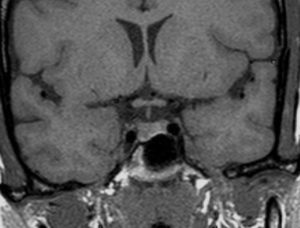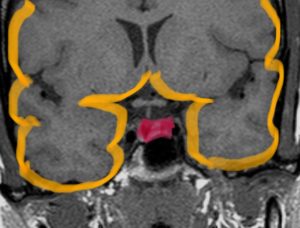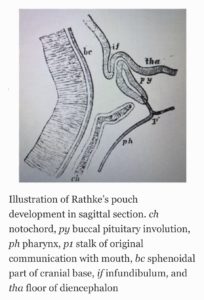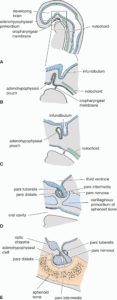From the desk of PWN cofounder Lewis S. Blevins, Jr. M D – Social media has been a springboard for misinformation, and the spread of such, regarding a wide variety of topics. Politics. Sports. Education. Law. Medicine. I can’t think of a field or arena that has not been touched by this epidemic (pardon my use of the word in this era) of said misinformation. There are, of course, a lot of reasons behind this epidemic. Some are related to the genesis of misinformation while others are a direct result of its rapid proliferation and propagation through society.

One of the topics of interest to us at Pituitary World News is this notion of pituitary adenomas being brain tumors. They’re not. And I’ll show you why in a moment. Yet, many firmly hold onto this belief that they’re brain tumors….and some seem to use this notion for secondary gain. Frankly, in this field, where many people we encounter haven’t heard of a pituitary tumor, it is our responsibility to educate family, friends, coworkers, and other contacts with accuracy and precision about these tumors. In this way, and only with this approach, will we be understood fully and recognized as truly advancing knowledge of pituitary disorders. Truthfully, a pituitary tumor is no more a brain tumor than is a little wooden boat a yacht….or a pedal pusher go-cart a high-performance sports car….or a mound of dirt a mountain.

Why all the confusion in the first place? Well. Probably because neurosurgeons do pituitary surgery. But they also do peripheral nerve surgery. And spine surgery, too. Peripheral nerves and the spine are not brain either. The only reason neurosurgeons operate on the pituitary gland is because they always have. Mostly because it’s in the head. And near the brain. Truthfully, some ear, nose, and throat surgeons also operate on the pituitary and nearby structures. So it stands to reason that a pituitary tumor is not a brain tumor just because neurosurgeons operate on the gland. Yes. The anterior pituitary is a gland. An endocrine gland. Not brain.
The World Health Organization has always included pituitary tumors with other tumor types that affect the brain and meninges mostly because neurosurgeons operate on the pituitary gland. To my knowledge, they have never called it a brain tumor. Here is a link to the most recent update: Overview of the 2017 WHO Classification of Pituitary Tumors. You will notice they do not refer to pituitary tumors as brain tumors in the manuscript.
A pituitary tumor is defined as a tumor from where it originates, the pituitary gland. So call it what it is. It’s not brain tissue. It is s tumor of your embryologic mouth. Yes. Your mouth! Perhaps we should call it an oral tumor?! I don’t like that so much, so let’s stick with pituitary. The pituitary gland is actually developed from the embryologic tissues that form the hard palate or roof of your mouth. That’s not your brain. In the developing embryo, the outer covering develops into a neuroderm that becomes the brain and spinal cord. The ectoderm forms the skin and the entire gastrointestinal tract from mouth to anus.

The primitive mouth or stomadeum is the tissue from which Rathke’s pouch develops. This pouch is flat tissue that grows upwards and then pinches off and develops into the anterior pituitary gland.

A large number of genes, well over 25 that we know of, are expressed controlling every aspect of pituitary development from formation of the Rathke’s pouch, to transformation to glandular tissue, to development of stem cells and transition to the different hormone-producing cells including successful production and release of anterior pituitary hormones.
Mutations in many of these genes have been described in persons with various forms of hypopituitarism. Further, mutations in at least two of these genes have been associated with the development of Rathke’s cysts in mice.
 It’s an amazing story and new knowledge is gained with each passing year. Here are some links for those of you who may be interested in learning more.
It’s an amazing story and new knowledge is gained with each passing year. Here are some links for those of you who may be interested in learning more.
The pituitary gland has come a long way. Early anatomists thought that its job was to produce snot, given its position above the sphenoid sinus cavity. They were certainly quite wrong! The pituitary has been called the “master gland.” Given the tissue of origin, its fantastical gene-controlled development, and the intricacies of its function, it deserves to not be considered a subject of the brain nor referred to as brain.” It stands alone, doing its job in conjunction with the brain and other glands. Elevate the pituitary to its rightful place and teach others about this marvelous gland.
Please help us spread the word about all things pituitary.
© 2021 – 2022, Pituitary World News. All rights reserved.
